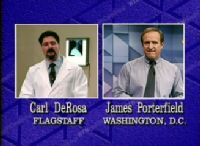

$74.00
This seminary organizes the musculature of the cervicothoracic spine and posterior shoulder through a three dimensional dissection.
Description
This seminary organizes the musculature of the cervicothoracic spine and posterior shoulder through a three-dimensional dissection. The apophyseal joints and the relationship of the nerve root, spinal canal contents and complete understanding of the structural relationships of the cardiothoracic spine and shoulder.
Course Details
| Course Length | |
|---|---|
| Platform | |
| Instructor(s) |
Details
Run Time: 4 hours
Attendee: Physical Therapists, PTA’s, Students, Athletic Trainers
Required Equipment: Personal Computer, Tablet, or Smartphone with access to Broadband Internet (<1.4 mbps)
Examination: 20-question test. Passing grade of 70% or higher required for certificate
Course Evaluation: Yes
Certificate of Completion: Yes
Workbook/Handout: Yes
Course Approvals/Certifications:
Outline
Module I
Unit 01: Introduction and Principles of Mechanical Pain
Unit 02: Overview of the Central Core
Unit 03: Overview of Articular Cartridge
Unit 04: Cadaver Dissection – Musculature Part I
Unit 05: Cadaver Dissection – Musculature Part II
Unit 06: Cadaver Dissection – Musculature Part III
Unit 07: Cadaver Dissection – Musculature Part IV
Unit 08: Questions and Answers and Pain Chart
Unit 09: Functional Standing Examination
Unit 10: Upper Quarter Problems
Unit 11: Cadaver Dissection – Spinal Canal
Unit 12: Discussions – Cervical Spine
Module II
Unit 13: Cadaver Dissection – Anterior Musculature Part I
Unit 14: Cadaver Dissection – Anterior Musculature Part II
Unit 15: Abdominal Relationship to the Upper Quarter
Unit 16: Impingement and Shoulder Dissection
Unit 17: Anatomy of Thoracic Outlet
Unit 18: Treatment Part I
Unit 19: Treatment Part II
Unit 20: Therapeutic Techniques
Unit 21: Therapeutic Exercises for the Upper Quarter
Unit 22: Therapeutic Exercises and Conclusions
Final Test
Certificate of Completion
Course Evaluation
Learning Goals
Upon completion of this class, you should be able to:
- Identify anatomy of the cervicothoracic and scapulohumeral regions

